Brewing Beer with Mild Ale Malt
Published: July 22, 2025 at 9:36:39 PM UTC
Last updated: December 12, 2025 at 3:35:30 PM UTC
Using specialty grains like mild ale malt can significantly enhance your beer's flavor and aroma. Mild ale malt is kilned at a slightly higher temperature than pale ale malt. This gives it a distinct character. This unique kilning process results in a beer with a rich, malty taste and a touch of sweetness. It's perfect for brewing a wide range of beer styles. By adding mild ale malt to your brewing, you can craft beers with complex and nuanced flavors.
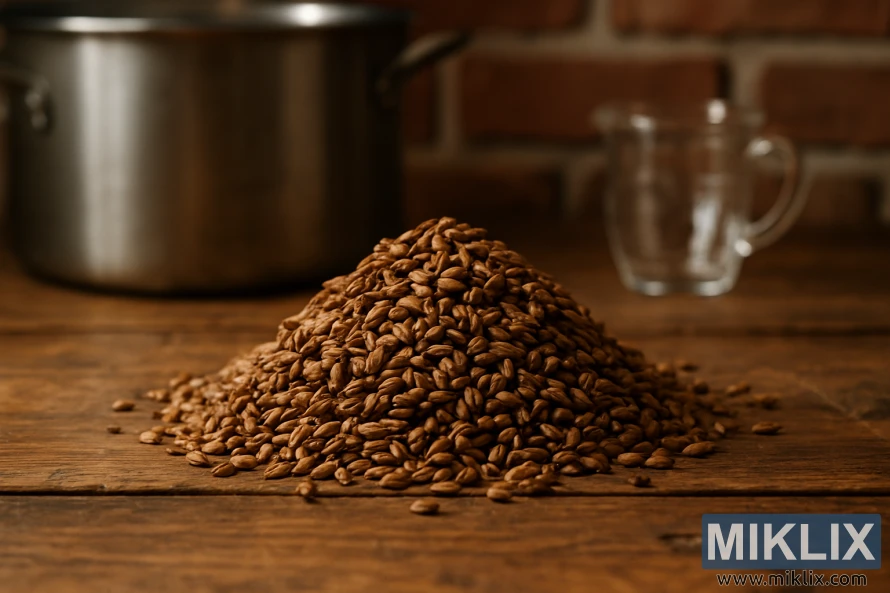
Key Takeaways
- Using mild ale malt can add unique flavors to your beer.
- Mild ale malt is kilned at a higher temperature than pale ale malt.
- This specialty grain is suitable for brewing various beer styles.
- Mild ale malt contributes a rich, malty flavor with a hint of sweetness.
- Incorporating mild ale malt can enhance the complexity of your beer.
Understanding Mild Ale Malt Fundamentals
The production of mild ale malt involves kilning barley at a higher temperature than pale ale malt. This results in a distinct character. It contributes to its fuller, more rounded flavor, making it a favorite among brewers. They seek to add depth to their beers.
Mild ale malt is a type of specialty grain cherished for its rich, malty flavor and aroma. Its production involves a specific malting process. This process enhances its diastatic power, though it's generally used with other malts. This combination achieves the desired enzymatic activity in the mash.
The characteristics of mild ale malt make it an excellent choice for certain beer styles. It's well-suited for brewing traditional British ales. Its malty sweetness can balance the hop bitterness. The flavor profile is often described as nutty, toasty, and slightly sweet. This adds complexity to the beer.
Understanding the diastatic power of mild ale malt is also key. While it has some enzymatic capability, brewers often combine it with more diastatically powerful malts. This ensures proper saccharification during the mashing process.
In summary, mild ale malt is a valuable ingredient in a brewer's toolkit. It offers a unique flavor profile and character to beers. By understanding its production process, characteristics, and how it interacts with other brewing ingredients, brewers can unlock new possibilities in their recipes.
The History and Evolution of Mild Ale Malt in Brewing
The journey of mild ale malt is marked by steady improvement, driven by malting and brewing technology advancements. Its origins are rooted in traditional British brewing, where it was prized for creating beers with rich, complex flavors yet without harsh bitterness.
The evolution of mild ale malt is deeply connected to malting history. As malting techniques evolved, so did the quality and consistency of mild ale malt. The introduction of kilning processes enabled brewers to fine-tune the malt's flavor, resulting in the distinctive taste of mild ale malt.
The transformation of mild ale malt has been influenced by technological advancements and shifting consumer tastes. Today, malting facilities use precise kilning methods to ensure consistent quality. This malt is integral to a range of beer styles, from classic mild ales to dark beers seeking a robust, malty taste.
The role of mild ale malt in brewing showcases the craft's rich heritage and its capacity to evolve while preserving traditional flavors. Its development mirrors broader brewing trends, from traditional methods to modern, technology-driven approaches.
- Mild ale malt originated in traditional British brewing.
- Advancements in malting techniques improved its quality.
- Kilning processes allowed for a more controlled flavor profile.
- Modern malting produces consistent quality.
In conclusion, the history and evolution of mild ale malt in brewing underscore the interplay between tradition and innovation in the brewing world. As brewers continue to explore new malts and techniques, mild ale malt remains a key ingredient for crafting beers with profound, complex flavors.
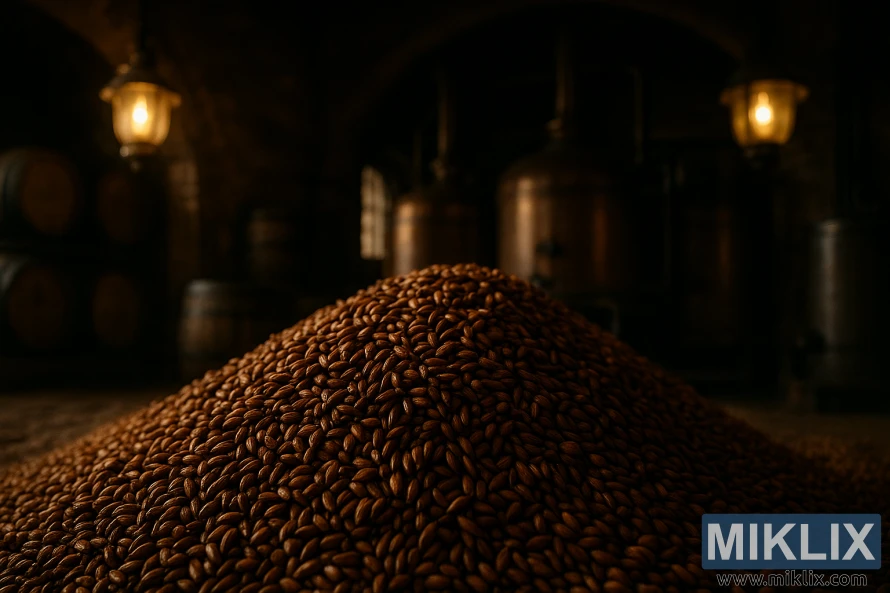
Characteristics of Quality Mild Ale Malt
For brewers aiming to craft high-quality beer, understanding mild ale malt's characteristics is key. This malt is celebrated for its rich, malty taste and a touch of sweetness. It's a versatile ingredient, suitable for brewing a wide range of beer styles.
The flavor profile of mild ale malt stands out. It brings a deep, malty taste and a subtle sweetness to the beer. This enhances its complexity. The malting process, with its higher kilning temperature, significantly shapes this flavor profile.
Another critical aspect is the malt's diastatic power. This refers to its ability to convert starches into fermentable sugars during mashing. Adequate diastatic power is essential for achieving the desired fermentation levels. This, in turn, influences the beer's alcohol content and flavor.
Moisture content is also vital for quality mild ale malt. It impacts the malt's storage stability and its performance in brewing. The ideal moisture range is between 3% and 5%. Too high, and it may develop stale or moldy flavors. Too low, and milling can be poor.
To sum up, quality mild ale malt is defined by its rich flavor, sufficient diastatic power, and optimal moisture. These traits are fundamental in ensuring the quality of the final beer and the efficiency of the brewing process.
- Rich, malty flavor and hint of sweetness
- Adequate diastatic power for proper starch conversion
- Optimal moisture content for storage stability and brewing performance
Comparing Mild Ale Malt to Other Base Malts
Mild ale malt is a favorite among brewers, but how does it stack up against other base malts like pale ale malt and Pilsner malt? It's essential to understand the differences between these malts to choose the best one for your brewing needs.
The main difference between mild ale malt and other base malts is their flavor profiles. Mild ale malt boasts a rich, malty taste with a hint of sweetness. In contrast, pale ale malt is cleaner and drier. Pilsner malt, known for its light color, offers a crisp, clean taste.
When it comes to diastatic power, mild ale malt has a lower rating than pale ale malt. Diastatic power measures a malt's ability to convert starches into fermentable sugars during mashing. Pale ale malt, with its higher diastatic power, is ideal for recipes with more adjuncts, efficiently converting these starches.
Mild ale malt is commonly used for brewing traditional British ales, such as mild ales and bitters. Pale ale malt, on the other hand, is versatile and suitable for a wide range of beer styles, from pale ales to IPAs. Pilsner malt is mainly used for brewing lagers, with a focus on Pilsner-style lagers.
- Mild ale malt offers a rich, malty flavor ideal for traditional British ales.
- Pale ale malt provides a cleaner flavor profile and higher diastatic power, making it suitable for a broader range of beer styles.
- Pilsner malt is characterized by its light color and crisp taste, perfect for brewing Pilsner-style lagers.
By comparing these base malts, brewers can make informed decisions about which malt to use for their specific brewing goals. Whether aiming for the traditional taste of a British ale or the crispness of a Pilsner, selecting the right base malt is a critical step in the brewing process.
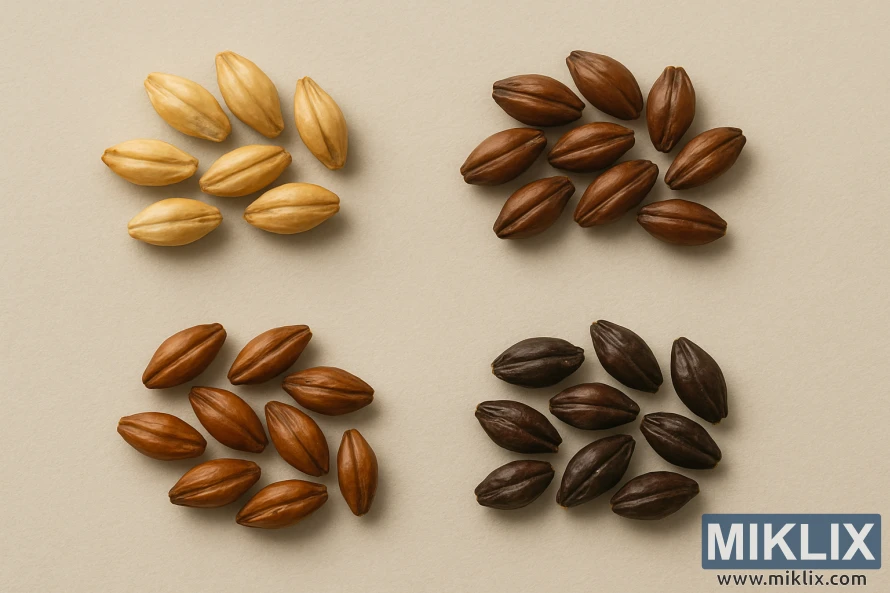
Best Beer Styles for Mild Ale Malt Usage
Mild ale malt is versatile in brewing, suitable for a variety of beer styles. It adds a rich, malty flavor, perfect for beers needing depth and complexity. This makes it a top choice for brewers aiming to craft beers with a nuanced taste.
It's a great fit for mild ales, known for their low hop bitterness and sweet maltiness. The malt's flavor enhances the beer's subtle hop notes, creating a smooth, enjoyable drinking experience.
Mild ale malt is also ideal for porters. These dark, robust beers benefit from the malt's rich flavor and aroma. The malt's kilning process imparts a toasted, malty character, enriching the beer's taste.
Other beer styles that can benefit from mild ale malt include:
- Brown ales: It adds depth and complexity, complementing their nutty, malty flavors.
- Scottish ales: The malt's rich flavor profile suits Scottish ales, known for their malty, caramel-like characters.
- Dark lagers: It can enhance the malt flavor and aroma in dark lagers.
When brewing with mild ale malt, consider its flavor profile and how it will impact the beer's character. By choosing the right brewing techniques and ingredients, brewers can create a wide range of beer styles. These showcase the versatility of mild ale malt.
Proper Storage and Handling of Mild Ale Malt
Storing mild ale malt correctly is essential for brewers aiming to enhance their beer's flavor. Ensuring the right storage and handling conditions is key to preserving the malt's quality and taste.
Mild ale malt, like other grains, is sensitive to its environment. Factors like moisture, light, and heat can harm its quality. To keep the malt fresh, it should be stored in a cool, dry spot. The best conditions include a consistent refrigerator temperature or a temperature-controlled area, away from sunlight.
When handling mild ale malt, it's vital to reduce exposure to air and moisture. This can be done by storing it in airtight containers. For those buying malt in bulk, using containers that are both airtight and rodent-proof is wise.
Here are some best practices for storing and handling mild ale malt:
- Store in a cool, dry place, away from direct sunlight.
- Use airtight containers to minimize exposure to air and moisture.
- Keep the storage area clean and free from pests.
- Monitor the storage conditions regularly to ensure consistency.
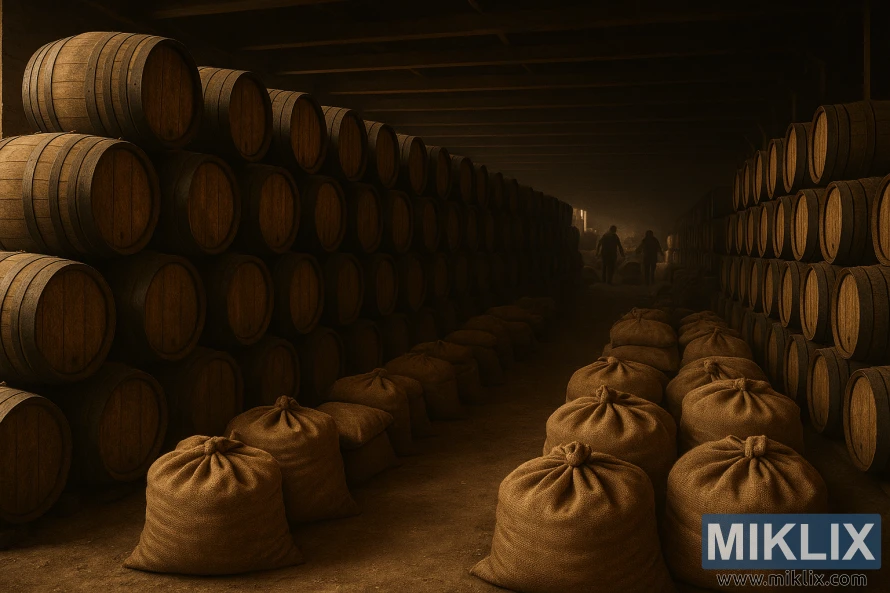
Creating Your Mild Ale Malt Recipe
The essence of a superior mild ale malt recipe hinges on achieving a harmonious blend of its deep, malty taste with the right hops and grains. This balance is not achieved by chance but through meticulous selection of ingredients and brewing methods.
In crafting the perfect pairing for mild ale malt, brewers must weigh several factors:
- The type of hops to use, whether bittering, flavor, or aroma hops, to complement the malt's flavor profile.
- The choice of specialty grains to enhance the beer's complexity and character.
- The yeast strain, which can significantly impact the fermentation profile and final flavor of the beer.
Mild ale malt's versatility allows it to be a cornerstone in a wide array of beer styles. It can serve as the foundation for a traditional English mild ale or as a starting point for more adventurous beer recipes.
To brew a delectable beer with mild ale malt, brewers should be bold in their experimentation with different ingredient combinations and brewing techniques. By grasping how mild ale malt interacts with other components, brewers can craft unique and tantalizing beer recipes.
Mashing Techniques for Mild Ale Malt
The art of mashing with mild ale malt requires understanding the best techniques to unlock its full flavor. Mashing is a key step in brewing where enzymes in the malt convert starches into fermentable sugars. For mild ale malt, brewers can use several mashing techniques to get the desired flavor and sugar extraction.
Single-temperature infusion mashing is a common method. It involves keeping the mash at a consistent temperature. This method is simple yet effective for mild ale malt, ensuring balanced sugar and flavor extraction. The ideal temperature for this method is between 152°F to 158°F (66°C to 70°C). This range is best for enzyme activity, like alpha-amylase and beta-amylase.
Multi-step mashing is another technique. It involves changing temperatures to optimize enzyme activity at different stages. This method is more complex but gives brewers more control over the brewing process. For mild ale malt, a multi-step mash might start with a lower temperature (around 140°F or 60°C) for beta-glucanase rest, followed by a higher temperature for saccharification.
The choice between single-temperature infusion and multi-step mashing depends on the brewer's goals and equipment. Single-temperature infusion is simpler and reliable. But, for those wanting more control and customization, multi-step mashing is the better choice.
- Key considerations for mashing mild ale malt include:
- Maintaining the optimal mashing temperature.
- Monitoring the mash pH to ensure it falls within the optimal range for enzyme activity.
- Adjusting the water-to-grist ratio to achieve the desired consistency and extraction efficiency.
By mastering these mashing techniques, brewers can unlock the full flavor of mild ale malt. Whether brewing a traditional mild ale or experimenting with modern styles, the right mashing technique is key to success.
Common Brewing Challenges and Solutions
Brewers working with mild ale malt often face common challenges. These can be overcome with the right techniques and strategies. Issues like stuck fermentation and off-flavors can affect the beer's quality.
Stuck fermentation is a primary challenge with mild ale malt. It happens when fermentation stops before all sugars are converted to alcohol. To avoid this, brewers must ensure their yeast is healthy and the fermentation temperature is ideal for the yeast strain.
Off-flavors are another common problem. They can stem from contamination, oxidation, or poor-quality ingredients. To reduce off-flavor risks, brewers should keep their brewing area clean and sanitized. They must also maintain their equipment well.
Some common solutions to brewing challenges with mild ale malt include:
- Monitoring fermentation temperatures closely to prevent stuck fermentation.
- Using high-quality yeast and ensuring it's properly rehydrated.
- Maintaining a clean and sanitized brewing environment to prevent contamination.
- Regularly checking the quality of ingredients and replacing them as needed.
By understanding and addressing these challenges, brewers can create high-quality beers. These beers will highlight the unique qualities of mild ale malt.
Commercial Examples Using Mild Ale Malt
Many commercial breweries have successfully incorporated mild ale malt into their beer recipes. This section will explore some notable examples of breweries that have utilized mild ale malt to create unique and flavorful beers.
Samuel Smith's, renowned for their traditional English beers, is a prime example. They've used mild ale malt in several brews, including their iconic Old Brewery Pale Ale and Winter Welcome. The mild ale malt contributes to the rich, malty flavor profile that Samuel Smith's beers are celebrated for.
Another example is Timothy Taylor's, a brewery based in West Yorkshire, England. Their award-winning beer, Timothy Taylor's Landlord, is brewed using mild ale malt. This adds depth and complexity to the beer's flavor. The success of this beer is partly attributed to the quality of the mild ale malt used in its production.
Case studies of these breweries reveal several benefits of using mild ale malt:
- Enhanced flavor profile with rich, malty notes
- Improved beer complexity and depth
- Consistency in brewing quality
These commercial examples demonstrate the versatility and value of mild ale malt in brewing a variety of beer styles. By examining the practices of successful breweries, brewers can gain insights into how to effectively incorporate mild ale malt into their own recipes.

Sustainability and Environmental Impact
Sustainability in brewing begins with the environmental footprint of ingredients like mild ale malt. The production and use of mild ale malt significantly affect the environment. Brewers must consider these impacts to lessen their ecological footprint.
Barley cultivation for mild ale malt requires large amounts of water and land. Sustainable practices, such as locally grown barley and water-saving irrigation, can help mitigate these effects.
Brewers can take several steps to make their use of mild ale malt more sustainable. These include:
- Optimizing malt usage to reduce waste
- Using energy-efficient malting processes
- Choosing malt from suppliers who follow sustainable agriculture
The malting process can also be made greener. Using renewable energy and minimizing water waste are key. These actions can greatly reduce the environmental impact of mild ale malt.
It's vital for brewers to understand and tackle the environmental effects of mild ale malt production. By making smart choices, brewers can help make the brewing process more eco-friendly.
Health and Nutritional Aspects of Mild Ale Malt Beers
Beers made with mild ale malt have become popular for their taste and health benefits. They are a good source of carbohydrates, proteins, and micronutrients. This makes them a nutritious choice for beer lovers.
The nutritional profile of these beers shows a moderate calorie count. This makes them a better option for those watching their diet. They also contain antioxidants, which help reduce oxidative stress and improve health.
Some key nutritional aspects of mild ale malt beers include:
- Moderate calorie content compared to other beer styles
- Presence of antioxidants that can help reduce oxidative stress
- Contribution to daily carbohydrate and protein intake
Enjoying beers made with mild ale malt in moderation can be part of a healthy lifestyle. They offer not just great taste but also some health benefits. It's important to drink these beers responsibly and in moderation.
Conclusion
Mastering mild ale malt is key to brewing exceptional beer. Understanding its fundamentals, history, and characteristics is vital for quality brews.
To explore mild ale malt further, brewers should experiment, practice, and be patient. Trying different recipes and techniques can unlock its full flavor. This way, brewers can create unique, delicious beers.
The brewing industry is constantly evolving. Future directions for mild ale malt may include innovative uses in craft brewing and sustainable production methods. By staying informed and adapting, brewers can lead the craft brewing scene.
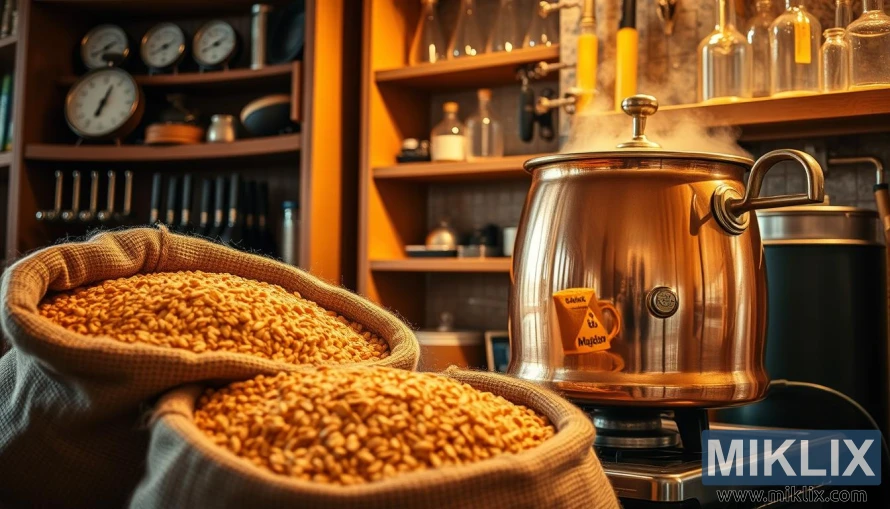
Further Reading
If you enjoyed this post, you may also like these suggestions:
